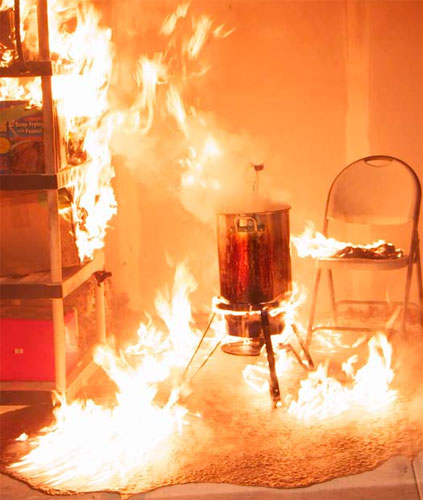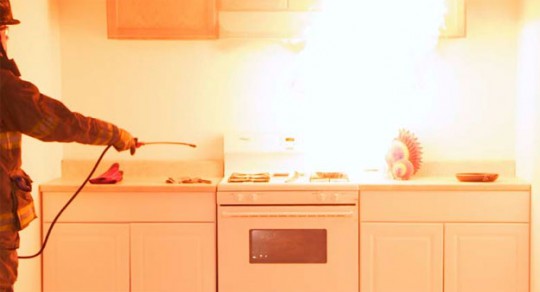Cook Carefully This Thanksgiving to Prevent Kitchen Fires
November 26, 2015
The U.S. Consumer Product Safety Commission (CPSC) is alerting consumers that the threat of fires in the kitchen triples on Thanksgiving Day. From 2009 through 2011, there was an average of about 1,300 cooking fires on Thanksgiving Day. This is more than three times the average daily rate from 2009 through 2011 of about 400 cooking fires a day.
“As fire safety experts have said for years, ‘Stand by your pan!’” said CPSC Chairman Inez Tenenbaum. “If you are frying, grilling or broiling food, stay in the kitchen. Not following this advice can be a recipe for disaster on Thanksgiving and throughout the year.” When it comes to fires in the home, cooking fires are number one. They accounted for nearly 150,000 fires (more than 40 percent of all annual unintentional residential fires) each year from 2009 through 2011. Unattended cooking is the top cause of cooking fires. Cooking fires also caused the most home fire-related injuries, with an estimated annual average of nearly 27 percent, or 3,450 injuries each year.
Overall, CPSC estimates an average of 362,300 unintentional residential fires, 2,260 deaths, 12,820 injuries and nearly $7 billion in property damage attended by the fire service occurring each year between 2009 and 2011.
To stay safe in the kitchen, avoid wearing loose-fitting clothing with long sleeves near ranges or ovens, watch children closely so they don’t come into contact with cooking food or hot stovetops, turn pan handles toward the back of the stove to prevent kids and others from spilling a pan’s scalding contents onto themselves.
In the event of a fire, call 911. Cover a pan with a lid to smother the flames. Never pour water or flour on a fire. That can make it worse. Keep a fire extinguisher in the kitchen.
 “Turkey fryer fires can be explosive and result in serious burns,” said Glenn Gaines, Deputy U.S. Fire Administrator for the United States Fire Administration (USFA). “Only use a turkey fryer outside and away from your home. Never use it in a garage or on a porch. Don’t overfill the oil or leave the turkey fryer unattended.”
“Turkey fryer fires can be explosive and result in serious burns,” said Glenn Gaines, Deputy U.S. Fire Administrator for the United States Fire Administration (USFA). “Only use a turkey fryer outside and away from your home. Never use it in a garage or on a porch. Don’t overfill the oil or leave the turkey fryer unattended.”
Since 2003, there have been more than 125 turkey fryer-related fires, burns, explosions, smoke inhalations, or laceration incidents reported to CPSC staff. There were 55 injuries among these incidents, but none were fatal. For the incidents reporting a dollar value for the property loss, the total loss reported was around $6 million. Additional incidents involving turkey fryers may have occurred that were not reported to CPSC.
Consumers should also protect themselves by installing smoke alarms in their homes. “Roughly three out of five home fire deaths happen in homes with no smoke alarms or no working smoke alarms,” said Jim Shannon, President of the National Fire Protection Association. “Smoke alarms save lives. Having a working smoke alarm cuts the chances of dying in a fire in half.”
Change the batteries in smoke alarms at least once every year and test the alarms every month to make sure they are working.
To provide a better warning of a fire and more escape time, install more than one alarm and interconnect all smoke alarms in the home. Interconnected alarms speak to one another, so if there is a fire in one part of the house, the interconnected alarms sound throughout the house and alert consumers to the fire more quickly.
For the best protection, install alarms on every level of the home, outside sleeping areas and inside each bedroom, and use both ionization and photoelectric alarms. Alarms that are powered by house wiring should have a battery backup.
Smoke alarms provide the warning, but every family should have a fire escape plan as well. Practice the escape plan with everyone in the house so they can get out quickly. The escape plan should include two ways out of each room (as practical) and a family meeting place that is outside where everyone can meet if there is a fire in the home.
n Fires




Comments